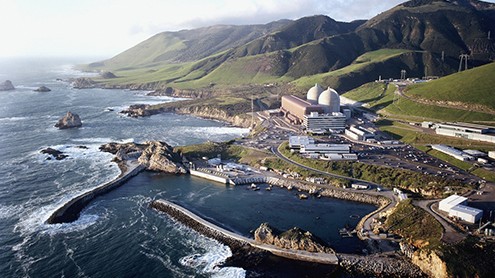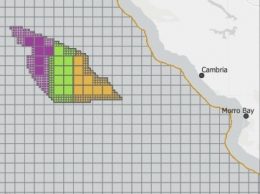Mayors deserve a say in Diablo Canyon closure
IN THIS ARTICLE
- Editorials Topic
- Editorial board and Henry Dubroff Author
By Editorial board and Henry Dubroff Friday, September 23rd, 2016

The Diablo Canyon Power Plant sits on prime coastal property near Avila Beach.
Cities that form the heart of the San Luis Obispo County economy should not become collateral damage as PG&E works out a plan to shutter the Diablo Canyon Nuclear Plant.
On Sept. 15, the mayors of San Luis Obispo, Morro Bay, Arroyo Grande, Atascadero, Paso Robles and Pismo Beach took what they called an “unprecedented step” and filed a request with the California Public Utilities Commission.
The request seeks to include the overall economic impact and public safety needs of the municipalities in negotiating and funding the exit of the county’s largest private employer.
The mayors correctly point to the safe storage of nuclear waste, job creations strategies, future use of the Diablo Canyon property and its desalination plant as items that the CPUC and PG&E should address with input from what the group of mayors calls the Coalition of Cities.
“We must have a voice in the process,” mayors wrote, in order to ensure their communities are safe and have a path to economic prosperity in a post-Diablo Canyon world.
It’s worth noting that in addition to providing direct funding to area schools, the combined economic benefit to the county of Diablo Canyon and its payrolls is $1 billion a year. Even if the plant is allowed to operate until 2025-26 when current licenses expire, decommissioning and other activities will mean that the loss of economic benefit is years away.
But the mayors are smart to demand a seat at the table today. Between now and June 2017 when a final decision on the proposed closure is due, there is plenty of opportunity for the cities to look at the future impacts of Diablo Canyon’s closing and plot a path forward.
It will also be important for the cities to have a say in how nuclear waste is stored onsite, longer term provisions for emergency response to any future incidents at the site and the future of the desal plant — potentially a reusable asset to alleviate some of San Luis Obispo County’s perpetual problems in finding adequate water resources.
For a county with just 280,000 residents, the loss of Diablo Canyon is going to be a big economic blow, albeit a blow that takes place in slow motion. By asserting their rights as stakeholders, the cities are giving themselves a better chance for a brighter long-term future.
SLO County’s cities have been accommodating to the Diablo Canyon plant and the coalition takes pains to point out that it is not opposing the PG&E plan now before the CPUC. But it’s important for the cities to assert their rights in the biggest economic transition in SLO County since the plant arrived decades ago.
Remembering those who served
From the days in 1926 when the predecessor to Lockheed Martin began operating a seaplane station off the Santa Barbara beaches, aviation has played a big role in the region’s economy — and in the national defense.
That was especially true during World War II when the site of what’s now the Santa Barbara Airport was a Marine Corps Air Station. Many pilots who fought in the Pacific Theater were trained on the South Coast.
Since the opening of the new airport, a major effort has been under way by the Pierre Claeyssens Veterans Foundation to create a permanent “Wings of Honor” memorial to the men and women who served at the station.
That effort got a big boost this summer when the Chumash Band of Santa Ynez Indians made a major grant to the “Wings of Honor” project and enlisted Pacific Coast Business Times Hall of Fame member Peter Jordano to be honorary chair.
Find out more at www.wingsofhonorsantabarbara.org.












